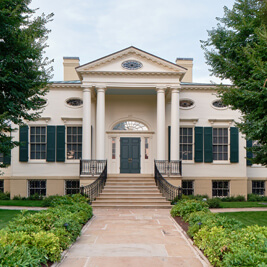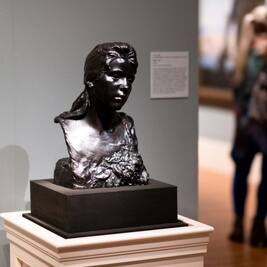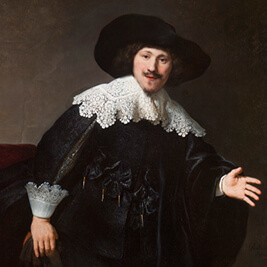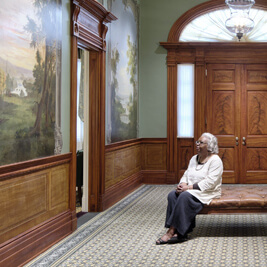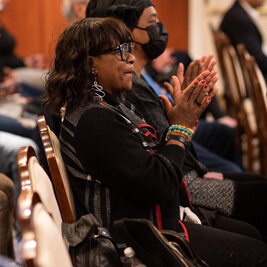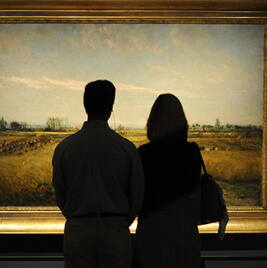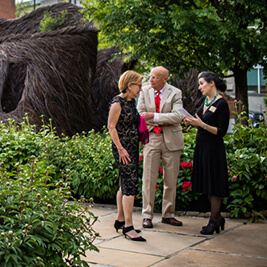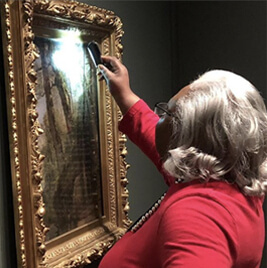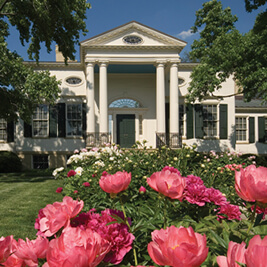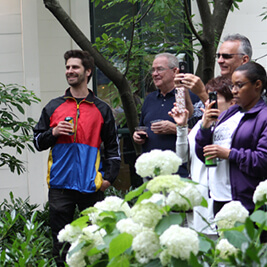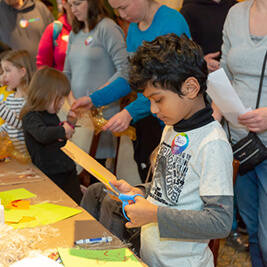- Do + See
- Dine + Host
- Give + Join
- Educate + Learn
Protecting the Duncanson Murals at the Taft Museum of Art
by Tamera Lenz Muente, Curator
In preparation for the Taft Museum of Art's Bicentennial Infrastructure Project, Taft staff moved the entire art collection out of the historic house. However, the landscape murals created by Black American artist Robert S. Duncanson could not be moved. Between 1850 and 1852, Duncanson painted the murals directly on the plaster walls of the Taft historic house. Protecting this remarkable achievement by the first Black artist to achieve an international reputation required a carefully executed plan to keep the works safe during preservation and rehabilitation.
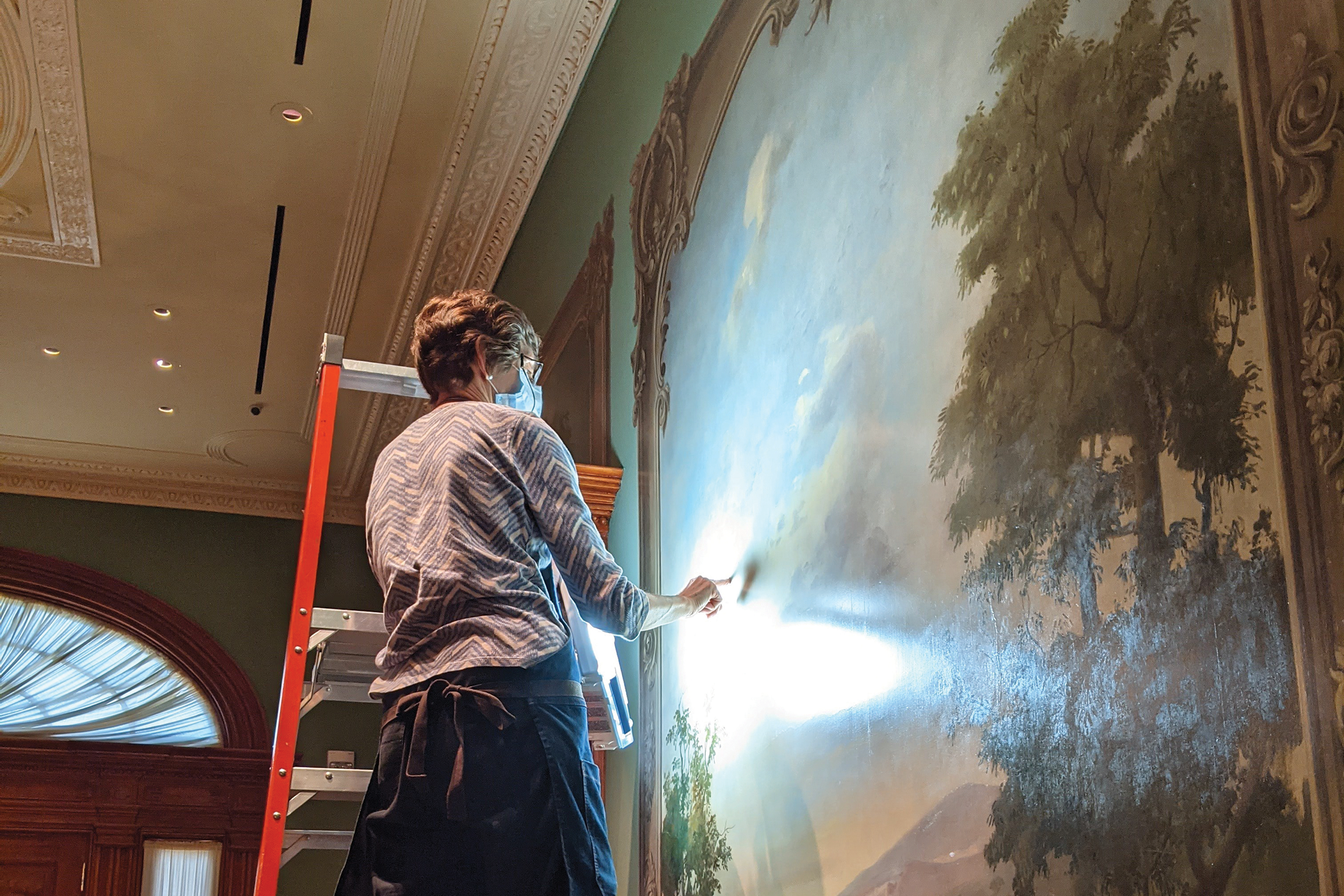
The Taft enlisted the services of Andrea Chevalier, paintings conservator from the Intermuseum Conservation Association in Cleveland, OH. Chevalier examined the murals to assess their baseline condition before the preservation project began, and will do so again after the project is complete. Taft staff will also conduct inspections throughout the process.
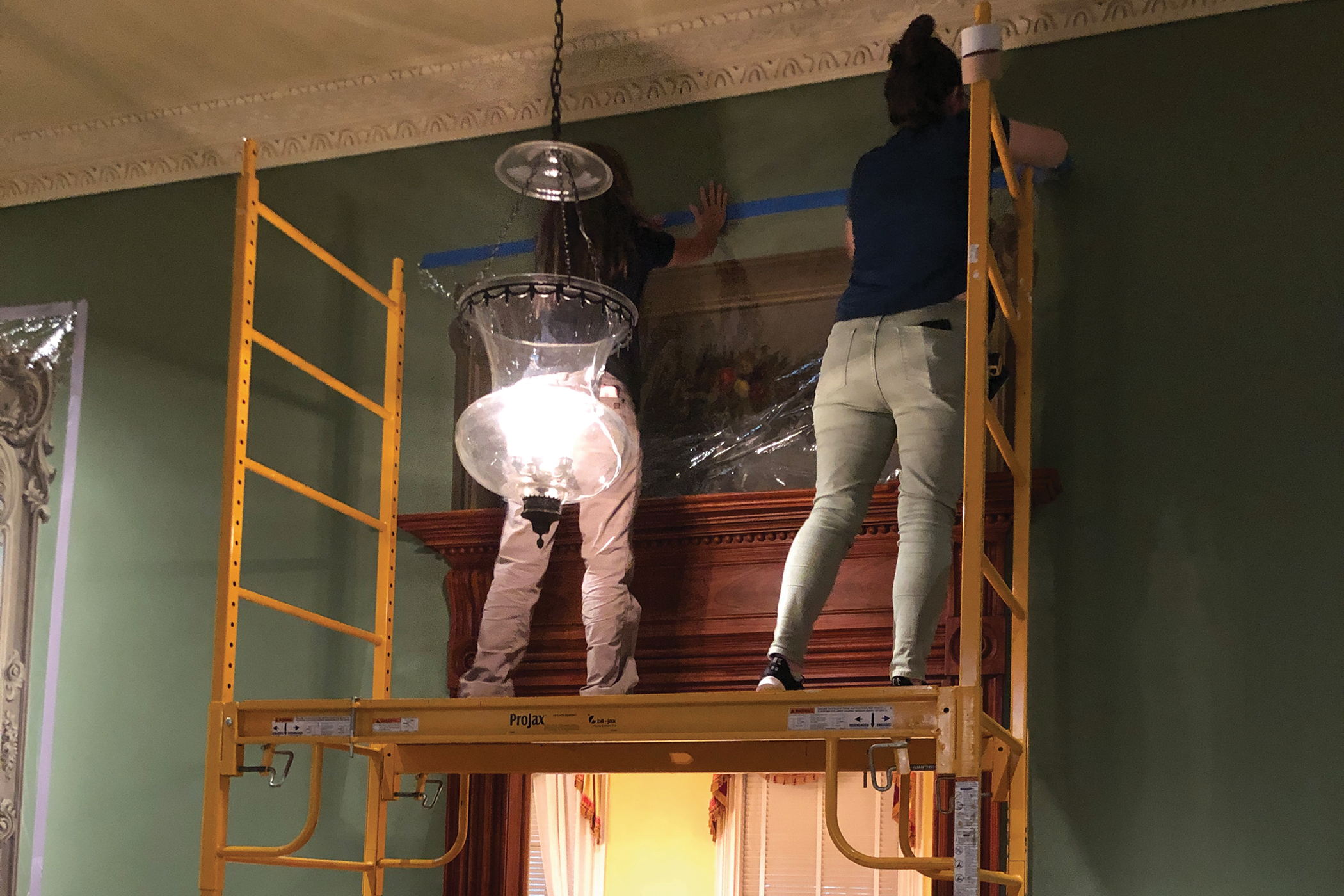
Taft collections staff covered the mural with Dartek, an archival clear nylon film, to protect them from dust. They secured the Dartek with removable painter's tape applied to the foyer's green walls. To avoid damaging the hand-painted faux woodgrain surface beneath each mural, they anchored the film with small weights.
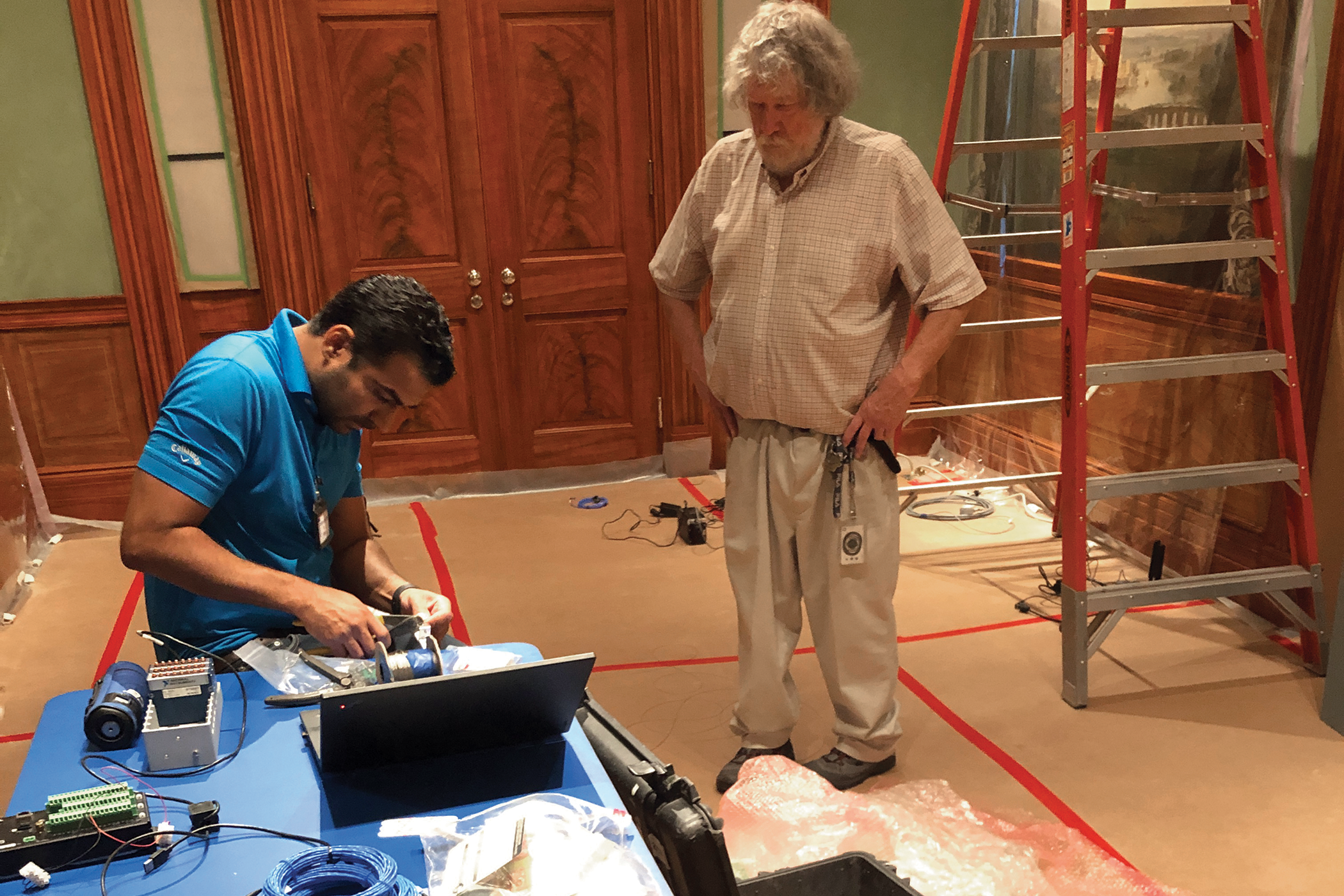
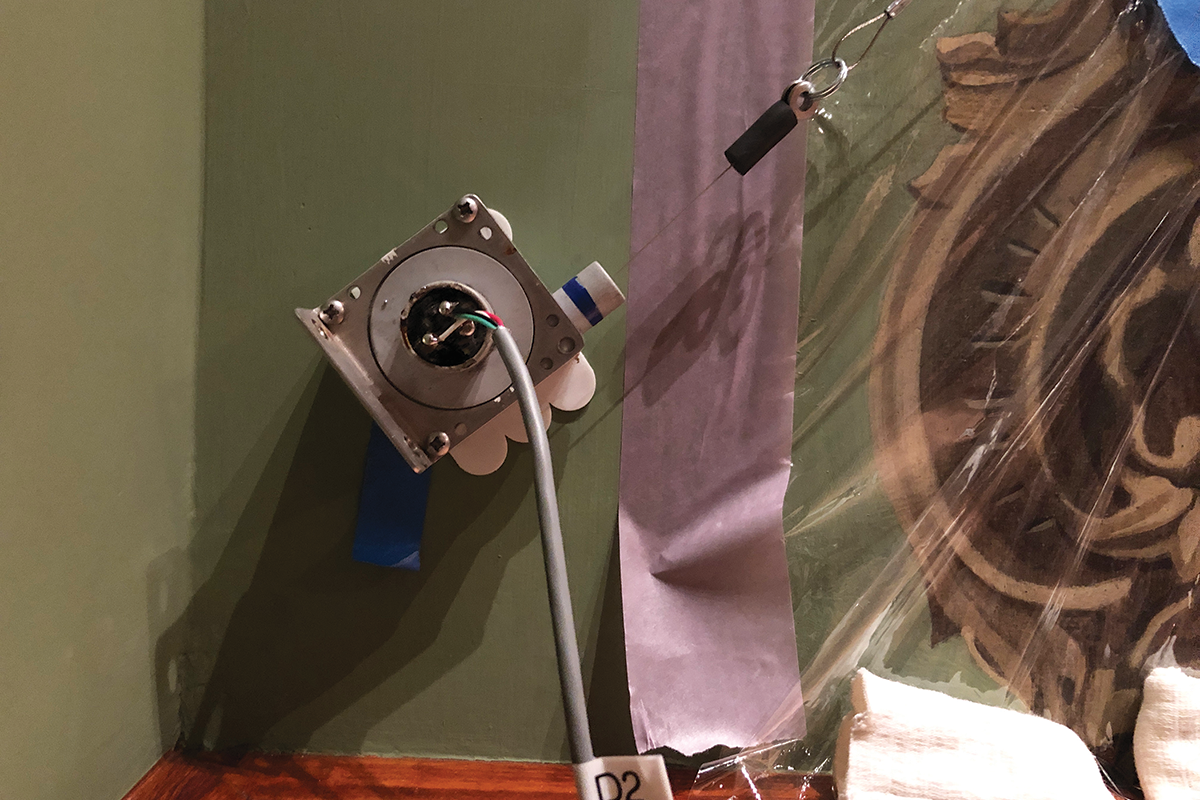
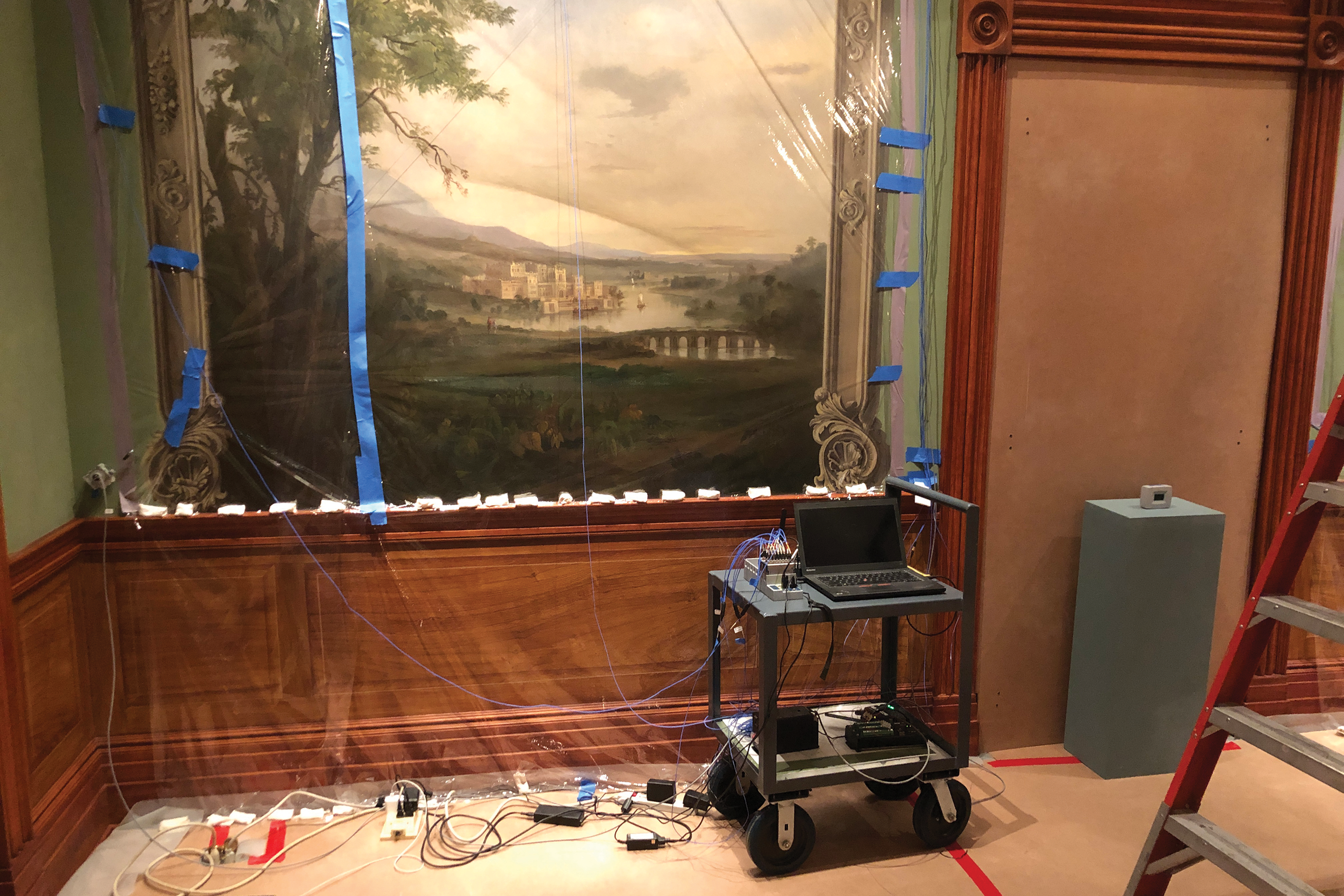
Because the preservation work can cause damaging vibrations, Taft staff worked with museum vibration experts from Wiss, Janney, Elstner Associates, Inc., based in Chicago, IL, to determine safe vibration limits. Sensors mounted at strategic locations around the murals detect tremors in the walls created by power tools, heavy equipment, and other sources. Strain gauges triggered by metal cables stretched across the murals detect expansion and contraction of the plaster itself, which can cause the surface to crack. The sensors are monitored remotely from Chicago and locally by Taft staff.
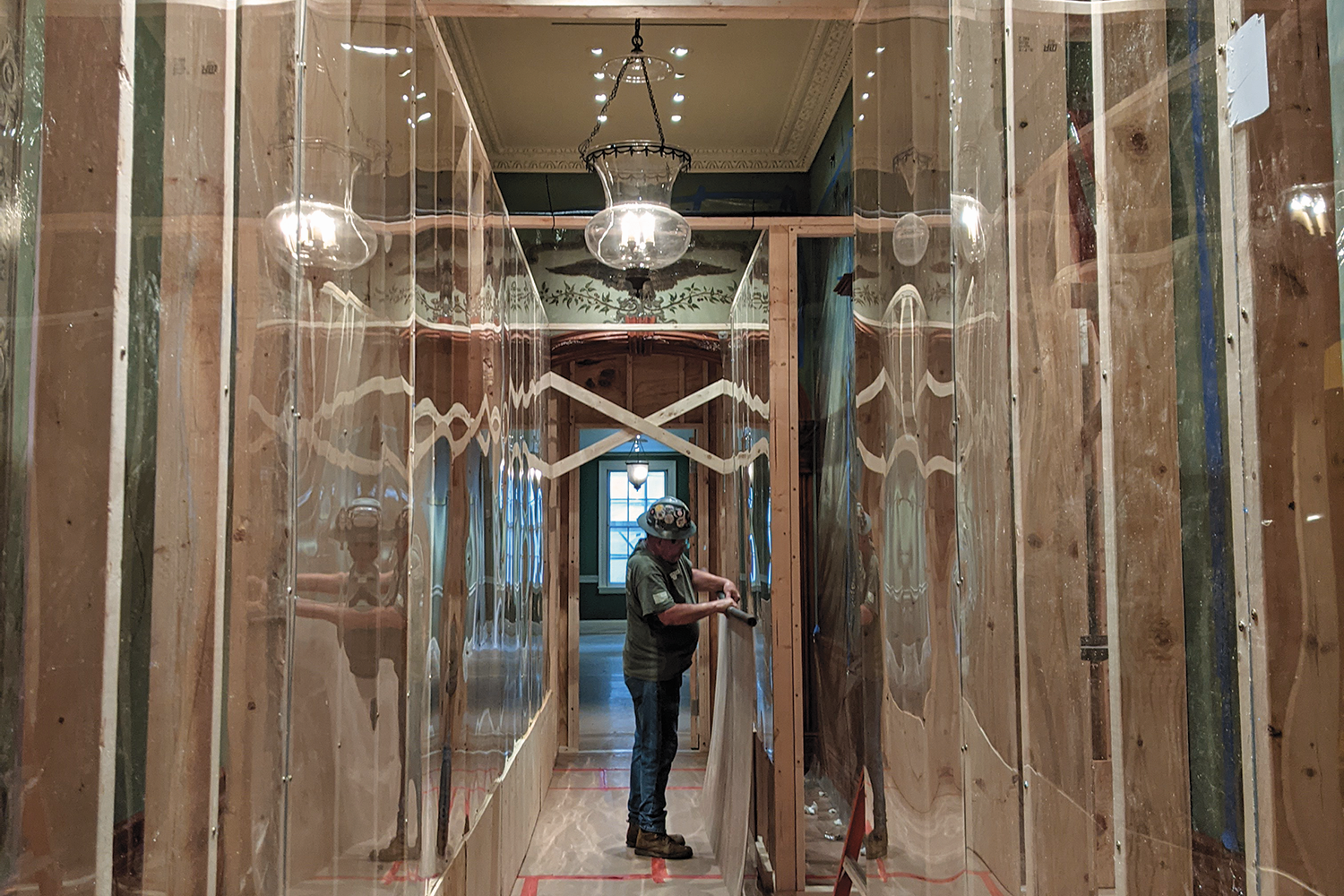
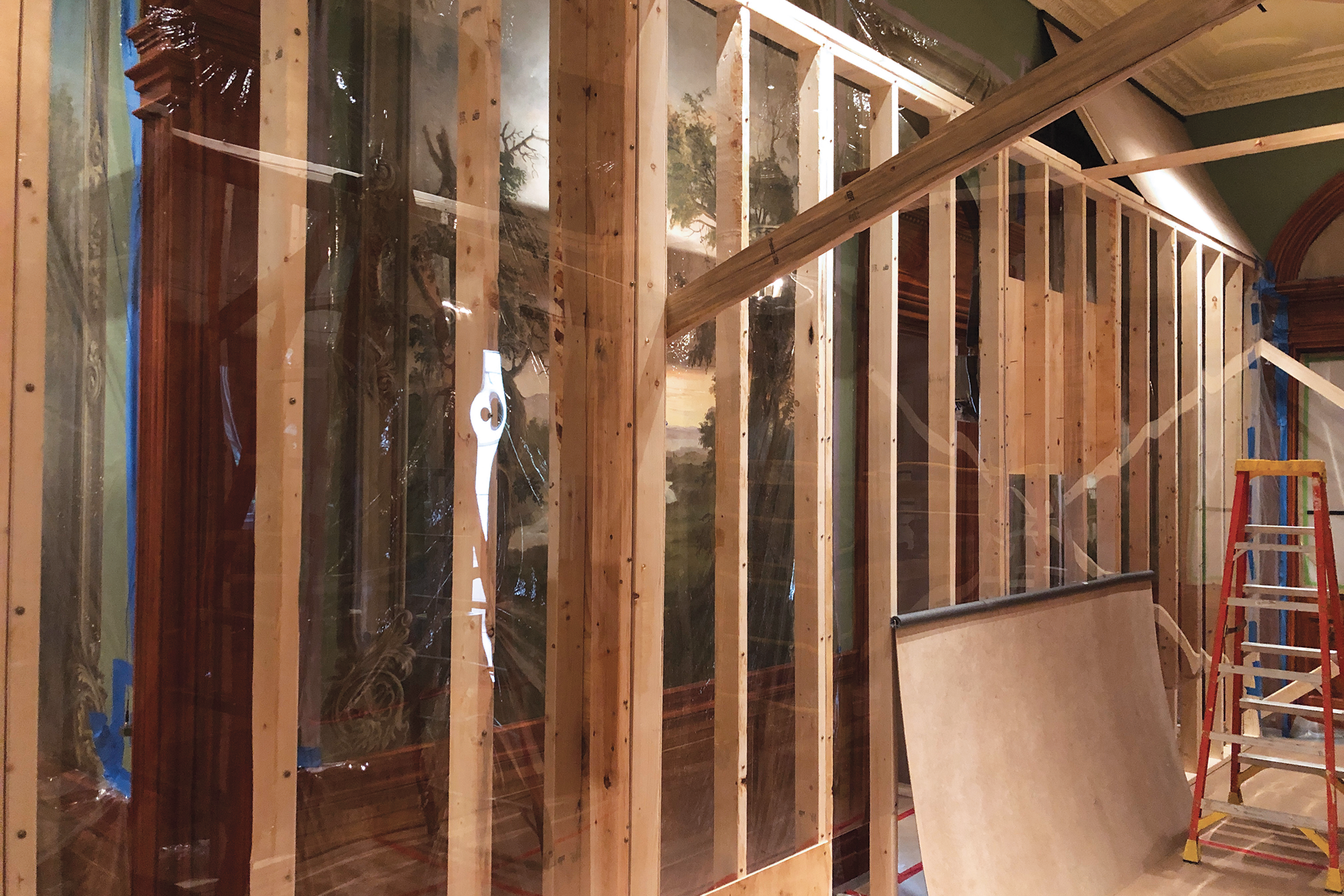
HGC Construction then enclosed the Duncanson Foyer with wooden and plexiglass walls. Inside the structure, portable HVAC equipment will maintain optimal temperature and humidity. Only staff trained to monitor the murals will access the foyer for the duration of the project.
These measures—and the entire Bicentennial Infrastructure Project—will protect these rare murals by Duncanson. Our job is to ensure these treasures continue to inspire and enlighten for the next 200 years. Discover the latest updates on the Taft Museum of Art's Bicentennial Infrastructure Project here.
